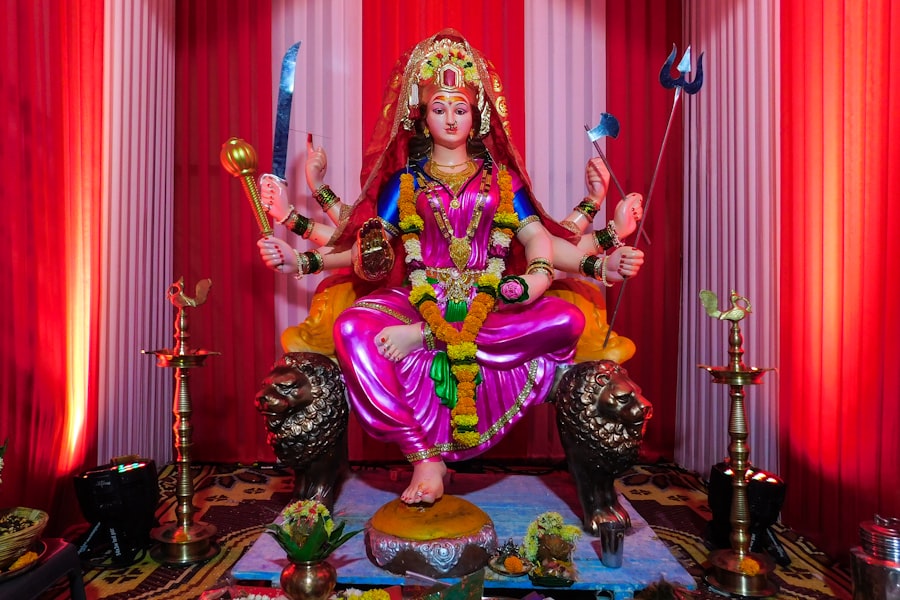The Counter Reformation, also known as the Catholic Reformation, emerged in response to the Protestant Reformation that began in the early 16th century. The Protestant Reformation, spearheaded by figures such as Martin Luther and John Calvin, challenged the doctrines and practices of the Roman Catholic Church, leading to a significant schism within Christianity. The origins of the Counter Reformation can be traced back to a combination of internal church reform movements and external pressures from Protestant reformers.
The Catholic Church recognized the need to address the grievances raised by reformers and to reaffirm its authority and teachings. One of the pivotal moments that catalyzed the Counter Reformation was the Council of Trent, convened in 1545. This ecumenical council aimed to address issues of corruption, clerical abuses, and doctrinal disputes that had been highlighted by Protestant critiques.
The council’s decrees reaffirmed traditional Catholic beliefs, such as the importance of sacraments, the authority of the Pope, and the necessity of good works for salvation. Additionally, the Council of Trent initiated a series of reforms within the Church, including the establishment of seminaries for the education of priests and stricter regulations on clerical conduct. These reforms were essential in revitalizing the Catholic Church and countering the spread of Protestantism.
Key Takeaways
- The Counter Reformation was a response by the Catholic Church to the Protestant Reformation, aiming to reform and strengthen the Church.
- Key players in the Counter Reformation included Pope Paul III, Ignatius of Loyola, and Teresa of Avila, who were instrumental in leading the movement.
- The Counter Reformation had a significant impact on Europe, leading to religious wars, the Council of Trent, and the establishment of the Jesuits.
- Radical voices, such as Martin Luther and John Calvin, emerged as dissenters of the Catholic Church, leading to further religious upheaval in the 16th century.
- The religious upheaval of the Counter Reformation had profound social and political ramifications, leading to changes in power dynamics and the rise of new religious movements.
The Key Players in the Counter Reformation
The Founding of the Jesuits
Among these key players was Ignatius of Loyola, a Spanish priest and theologian who founded the Society of Jesus, commonly known as the Jesuits. Established in 1534, the Jesuits became instrumental in promoting Catholic education, missionary work, and spiritual renewal. Ignatius emphasized a rigorous approach to spirituality through his Spiritual Exercises, which encouraged personal reflection and a deepening relationship with God.
Education and Evangelization
The Jesuits’ commitment to education led to the establishment of schools and universities across Europe, effectively countering Protestant educational initiatives. This effort helped to promote Catholic values and ideals, while also providing a platform for evangelization and missionary work.
Papal Reforms and the Council of Trent
Another significant figure was Pope Paul III, who reigned from 1534 to 1549. His papacy marked a turning point in the Catholic Church’s response to Protestantism. Paul III convened the Council of Trent and took decisive steps to address corruption within the Church. He initiated reforms aimed at improving the moral standards of clergy and enhancing the Church’s administrative efficiency. Furthermore, Paul III’s support for the arts and culture helped foster a Catholic revival that manifested in baroque architecture and religious art, which served to inspire devotion among the faithful.
The Impact of the Counter Reformation on Europe

The Counter Reformation had profound effects on European society, politics, and religion. One of its most significant impacts was the solidification of Catholic identity in regions where Protestantism had gained a foothold. In countries like Spain and Italy, the Counter Reformation reinforced loyalty to the papacy and traditional Catholic practices.
The establishment of new religious orders, such as the Capuchins and Ursulines, contributed to a renewed sense of Catholic piety and community engagement. These orders focused on education, charity, and missionary work, which helped to revitalize local communities and strengthen Catholicism’s presence. In contrast, regions that embraced Protestantism experienced a different trajectory.
The Counter Reformation intensified religious conflicts across Europe, leading to wars and political strife. The Thirty Years’ War (1618-1648) is one of the most notable examples of this religious turmoil, as it pitted Catholic states against Protestant ones in a devastating conflict that reshaped the political landscape of Europe. The war resulted in immense loss of life and property, ultimately leading to a reconfiguration of power dynamics within Europe.
The Peace of Westphalia in 1648 marked a significant turning point by recognizing the coexistence of Catholic and Protestant states, thereby laying the groundwork for modern nation-states.
Radical Voices: The Dissenters of the 16th Century
While the Counter Reformation sought to reaffirm Catholic doctrine and combat Protestantism, it also gave rise to radical voices that challenged both established Catholicism and mainstream Protestantism. Among these dissenters were groups such as the Anabaptists, who advocated for adult baptism and a separation from state influence in religious matters. Their radical views on baptism and communal living often put them at odds with both Catholics and Protestants alike.
Anabaptists faced severe persecution during this period; many were executed or imprisoned for their beliefs.
His radical ideas led him to be condemned by both Protestant reformers like John Calvin and Catholic authorities.
Servetus’s execution in Geneva in 1553 exemplified the intolerance that characterized this era; it highlighted how dissenting voices were often silenced through violence rather than dialogue. These radical movements not only questioned established religious norms but also contributed to broader discussions about individual conscience and religious freedom that would resonate through subsequent centuries.
The Religious Upheaval and its Social and Political Ramifications
The religious upheaval instigated by both the Protestant Reformation and the Counter Reformation had far-reaching social and political ramifications across Europe. As religious identities became increasingly intertwined with national identities, rulers found themselves navigating complex landscapes where allegiance to either Catholicism or Protestantism could dictate political alliances and conflicts. In England, for instance, King Henry VIII’s break with Rome led to the establishment of the Church of England, which not only altered religious practices but also shifted political power dynamics within the country.
In France, the Wars of Religion between Catholics and Huguenots (French Protestants) created a climate of fear and violence that culminated in events such as the St. Bartholomew’s Day Massacre in 1572.
The resulting instability prompted calls for tolerance and coexistence, leading to efforts such as the Edict of Nantes in 1598, which granted limited rights to Huguenots while reaffirming Catholicism as the state religion.
The Legacy of the Counter Reformation and Radical Voices

The legacy of the Counter Reformation is multifaceted, influencing not only religious practices but also cultural developments across Europe. The revitalization of Catholicism during this period led to a flourishing of art, music, and literature that sought to inspire faith among believers. Baroque art emerged as a powerful medium for conveying religious themes, with artists like Caravaggio and Bernini creating works that evoked emotional responses from viewers.
This artistic movement was closely tied to the goals of the Counter Reformation, aiming to engage people’s senses and draw them into a deeper spiritual experience. Moreover, radical voices from this era laid foundational ideas for modern concepts of religious freedom and individual conscience. The dissenters who challenged both Catholic orthodoxy and mainstream Protestantism contributed to an evolving discourse on personal belief systems that would eventually influence Enlightenment thinkers.
Their struggles against persecution highlighted the need for tolerance in matters of faith—a principle that would gain traction in subsequent centuries as societies grappled with issues of pluralism and human rights. In summary, while the Counter Reformation sought to restore Catholic dominance in Europe following the challenges posed by Protestant reformers, it simultaneously gave rise to radical voices that questioned established norms. The interplay between these movements shaped not only religious landscapes but also social structures and political realities across Europe, leaving an indelible mark on history that continues to resonate today.
For a deeper exploration of religious upheaval in the 16th century, readers may be interested in the article Vedanta Philosophy: Exploring the Nature of Reality and Human Existence. This article delves into the philosophical and spiritual teachings of Vedanta, a school of thought that seeks to understand the nature of reality and the human experience. By examining the concepts and institutions of Indian society, readers can gain a broader perspective on the religious and intellectual movements that shaped the Counter Reformation period.
FAQs
What was the Counter Reformation?
The Counter Reformation was a period of Catholic resurgence in response to the Protestant Reformation. It involved a series of reforms within the Catholic Church and efforts to counter the spread of Protestantism.
What were the main goals of the Counter Reformation?
The main goals of the Counter Reformation were to address the issues raised by the Protestant Reformation, to reassert the authority of the Catholic Church, to combat heresy, and to win back those who had converted to Protestantism.
What were some of the key events and movements of the Counter Reformation?
Some key events and movements of the Counter Reformation included the Council of Trent, the founding of the Jesuit order, the Spanish Inquisition, and the establishment of the Index of Forbidden Books.
Who were some of the key figures of the Counter Reformation?
Key figures of the Counter Reformation included Pope Paul III, Ignatius of Loyola (founder of the Jesuits), Teresa of Avila, and Pope Pius V.
What were the Radical Voices of the 16th Century?
The Radical Voices of the 16th Century were individuals and groups who challenged the established religious and social order, often advocating for more radical reforms and interpretations of Christianity. This included movements such as the Anabaptists and the Radical Reformation.
How did the Radical Voices contribute to the religious upheaval of the 16th Century?
The Radical Voices contributed to the religious upheaval of the 16th Century by challenging the authority of the Catholic Church and the traditional religious hierarchy, and by promoting alternative interpretations of Christianity that often clashed with the mainstream beliefs of the time.






















+ There are no comments
Add yours